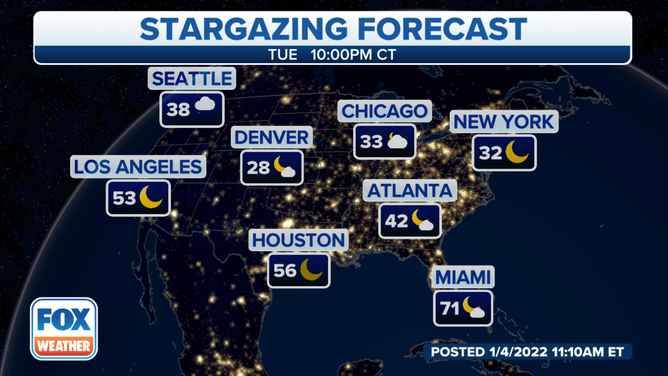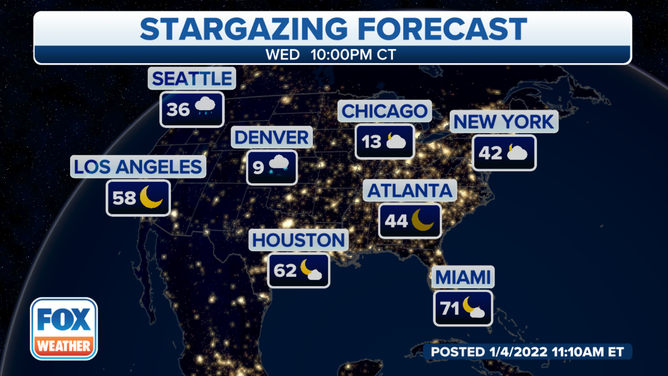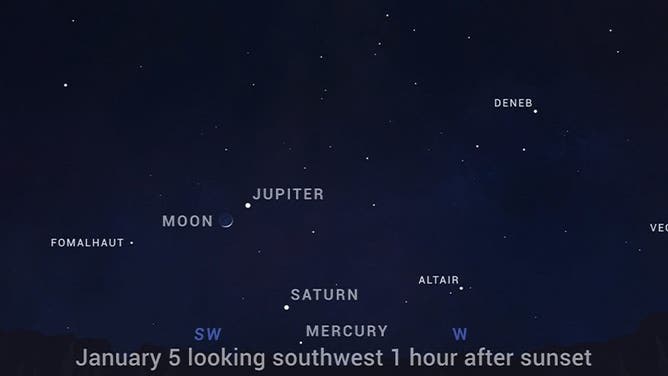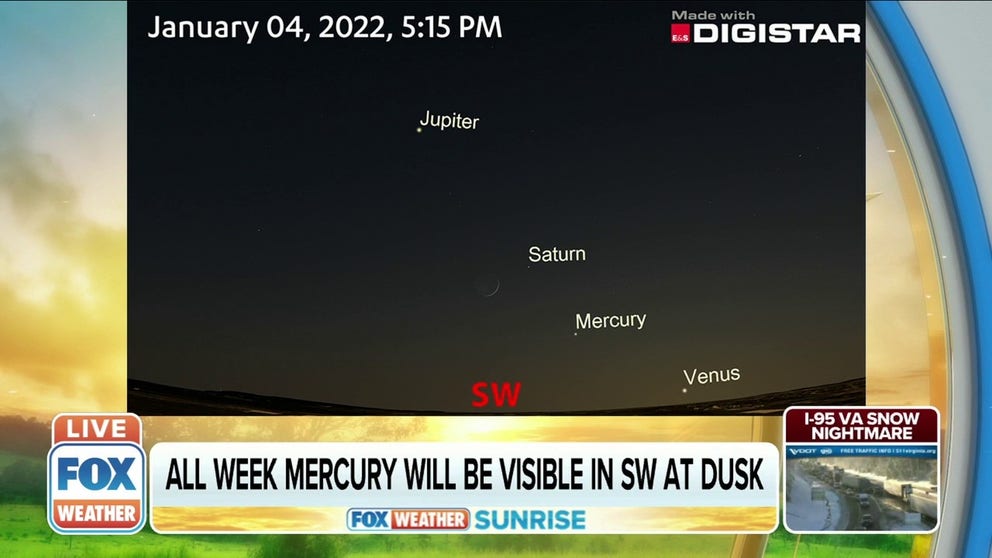Look to the sky: This week is filled with stars, planets to gaze at
There will be a very convenient dinner-hour array of planets to check out in the sky this week
Mercury well-placed for viewing this week
The sky is always filled with stars and planets to gaze at. Liberty Science Center Planetarium Michael Shanahan joins FOX Weather for your stargazing forecast and what you can expect this week.
If you are a stargazer, this week is a perfect time for catching a look at the planets in the evening.
According to Michael Shanahan, planetarium director at the Liberty Science Center in New Jersey, there will be a very convenient dinner-hour array of planets to check out in the sky.
Just look towards the southwestern sky around 5:15 p.m., any time across the U.S., when it begins to get dark.
"The blazing dot of light, one-third of the way up from the sky, will be the planet Jupiter, which will be shining for about six more weeks," Shanahan said.
And here’s a helpful tip: If you hold your hand at arm’s length, three hands above the horizon is where you will find Jupiter.
"One hand is about 10 degrees or so. So, three-hands length above the horizon is where you’ll find Jupiter," Shanahan said.
Your stargazing forecast Tuesday night looks perfect
If you're in the Central Plains or the Pacific Northwest, this forecast isn't really for you. But now that that storm system pushed off the East Coast, we've got clear some pretty clear in the forecast, which is perfect for stargazers.
And the evening forecast looks perfect for stargazing if you are not in the Central Plains or the Pacific Northwest. Clear skies will continue all night long from Los Angeles to Denver.

(FOX Weather)
Atlanta might see a little cloud cover start to edge its way up as we head late into the night Tuesday night. But overall, expect to see some pretty clear skies at least midnight getting into the day Wednesday.

(FOX Weather)
While checking out Jupiter, be sure to look for the very slender crescent Moon. The two will be only about 4 degrees apart, which should make them appear together through most binoculars, NASA said.
"And next to the Moon, just to the right, you’ll find the planet Saturn, as well," Shanahan said.

You will find the crescent Moon only about 4 degrees away from Jupiter.
(NASA/JPL-Caltech)
And for all those extending your arm to check, that will be one hand above the horizon where you’ll find those two.
Saturn will be hanging on for about two more weeks before we lose it from our evening sky.
Mark your calendar for Jan. 29, too. NASA said if you happen to be up early, you can catch sight of the Moon near Mars. Joining the pair in the southeastern sky will be Venus.

You can catch sight of the Moon near Mars on Jan. 29. Joining the pair in the southeastern sky will be Venus.
(NASA/JPL-Caltech)
"Having left the evening skies last month, Venus is now rising before the Sun as the ‘Morning Star,’" NASA said. "Now, Mars is slowly returning to view after passing behind the Sun over the past few months."
NASA said they stopped communication with their spacecraft at Mars for about two weeks during October’s solar conjunction. It’s an event every two years when the planet is directly opposite the Sun.
NASA said Mars should continue to brighten and climb higher over the next few months and have super-close conjunctions with Saturn and Jupiter.

